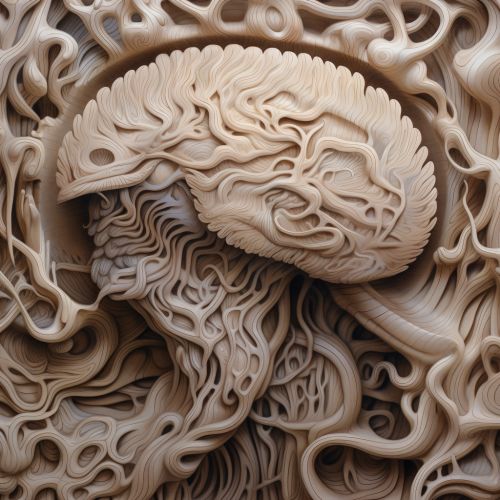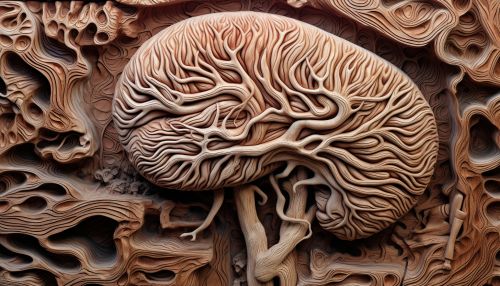Human Brain
Anatomy of the Human Brain
The human brain is the central organ of the human nervous system, and with the spinal cord makes up the central nervous system. The brain consists of the cerebrum, the brainstem and the cerebellum. It controls most of the activities of the body, processing, integrating, and coordinating the information it receives from the sense organs, and making decisions as to the instructions sent to the rest of the body.


Structure
The human brain is divided into two symmetrical halves known as the cerebral hemispheres. Each hemisphere is conventionally divided into four lobes – the frontal, temporal, parietal, and occipital lobes. The surfaces of the hemispheres are convoluted, with gyri (ridges) and sulci (furrows) that increase the surface area of the cortex, the outer layer of the brain.
Frontal Lobe
The frontal lobe is located at the front of the brain and is associated with reasoning, motor skills, higher level cognition, and expressive language. Damage to the frontal lobe can lead to changes in sexual habits, socialization, and attention as well as increased risk-taking.
Temporal Lobe
The temporal lobe is located on the bottom section of the brain. This lobe is also the location of the primary auditory cortex, which is important for interpreting sounds and the language we hear. The hippocampus is also located in the temporal lobe, which is why this portion of the brain is also heavily associated with the formation of memories.
Parietal Lobe
The parietal lobe is located in the middle section of the brain and is associated with processing tactile sensory information such as pressure, touch, and pain. A portion of the brain known as the somatosensory cortex is located in this lobe and is essential to the processing of the body's senses.
Occipital Lobe
The occipital lobe is located at the back portion of the brain and is associated with interpreting visual stimuli and information. The primary visual cortex, which receives and interprets information from the retinas of the eyes, is located in the occipital lobe.
Function
The human brain is responsible for coordinating and controlling all bodily functions, interpreting and processing information received from the senses, and making decisions. It is also responsible for cognition, emotions, and consciousness.
Cognition
Cognition refers to a range of high-level brain functions including learning, thinking, reasoning, remembering, problem solving, decision making, and attention. The cerebral cortex, the largest part of the human brain, is associated with higher brain function such as thought and action.
Emotions
The limbic system, located just beneath the cerebrum, is responsible for emotion, learning and memory. The limbic system includes the amygdala, the hypothalamus, and the hippocampus.
Consciousness
Consciousness, defined as our awareness of ourselves and our environment, is believed to be the product of the synchronized activity of various neural networks. The reticular activating system, a network of neurons located in the brain stem, plays a key role in regulating wakefulness and sleep-wake transitions.
Development and Evolution
The human brain develops rapidly in the first few years of life. During this time, the connections between neurons become more complex and more diverse, which is a critical period of brain development. In terms of evolution, the human brain has undergone significant changes. The most significant of these changes is the expansion of the cerebral cortex in humans, particularly the frontal lobes, which are associated with functions such as decision making and social behavior.
Disorders of the Human Brain
There are many disorders that can affect the human brain. Some of these include neurodegenerative diseases such as Alzheimer's disease and Parkinson's disease, mental disorders such as depression and schizophrenia, and neurological disorders such as epilepsy and stroke. Treatment of these conditions involves a combination of medication, therapy, and in some cases, surgery.
